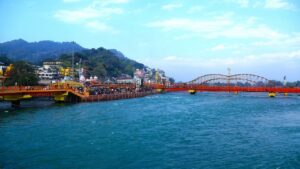The Ganga River, revered across India as a sacred lifeline, is facing immense ecological pressure due to industrial waste, domestic sewage, and urban runoff. While large-scale solutions involving chemicals and electricity are often proposed, there exists a more sustainable, eco-friendly approach to reviving the river’s purity without harming its natural balance. In this article, we present a comprehensive and actionable blueprint on how to clean the Ganga River without electricity or chemicals, focusing solely on natural, manual, and community-powered solutions.
Why Avoid Electricity and Chemicals in River Cleaning
Electricity-driven machinery and chemical treatment plants pose a significant carbon footprint and may disrupt aquatic life. Over-reliance on such methods can compromise the river’s biodiversity. Our focus here is on sustainable, cost-effective, and locally implementable methods that promote long-term ecological balance.
Manual River Surface Cleaning Using Community Participation
One of the most effective methods to clean the Ganga without electricity or chemicals is community-based surface cleaning:
Daily River Skimming Teams: Organize teams of volunteers equipped with long-handled nets to remove floating debris, plastics, and organic waste.
Bamboo Rafts with Nets: Simple bamboo rafts carrying mesh nets can be floated on the surface, catching plastic waste passively as the river flows.
Village-Level Cleanup Drives: Regular awareness programs can engage local communities in weekly cleanup activities, ensuring no plastic or domestic waste ends up in the river.
These actions are manual, scalable, and require no power, making them highly feasible in rural and semi-urban Ganga regions.
Use of Floating Bio-Filters and Phytoremediation
Phytoremediation is a powerful natural technique where certain aquatic plants absorb pollutants:
Planting Vetiver Grass and Water Hyacinth: These plants absorb heavy metals, nitrates, and other pollutants naturally from the river water.
Floating Gardens (Boats with Soil Beds): These are rafts loaded with pollutant-absorbing plants that float on the water surface. They purify the water as the roots interact with contaminants.
Locally Grown Solutions: Encourage planting of Canna indica, Duckweed, and Typha, which are proven to remediate water without any artificial input.
These natural bio-filters not only clean the water but also support the local ecosystem by providing shelter for fish and aquatic insects.
Sediment Management through Manual Desilting
The accumulation of silt in the river bed reduces water flow and spreads contaminants. Here’s how it can be addressed manually:
Seasonal Desilting Campaigns: Organize manpower-intensive projects post-monsoon to manually remove excess silt and sludge.
Use of Spades and Buckets: Traditional tools can be used by laborers in shallow regions to desilt without disturbing aquatic ecosystems.
Channel Realignment: Re-channeling narrow river paths manually can improve water flow and reduce stagnation zones.
This method, practiced wisely, can significantly improve the self-cleaning ability of the river.
Natural Waste Filtration via Constructed Wetlands
A constructed wetland is a shallow basin with layers of gravel, sand, and vegetation that filters wastewater naturally:
Greywater Filtration Before Discharge: Local households and businesses can route their wastewater through such wetlands.
Using Indigenous Plants: Plants like Phragmites australis and Colocasia can be used to treat the water as it flows through.
Zero-Energy Infrastructure: These systems function with gravity alone, needing no electricity or chemicals.
This technique is ideal for villages and small towns located on the riverbanks, providing an efficient pre-treatment for household discharge.

Ban on Plastic and Sustainable Waste Management
Plastic is one of the primary pollutants in the Ganga. Its removal and prevention are critical:
Strict Plastic Ban Enforcement: Implement local legislation that enforces complete bans on single-use plastics near riverbanks.
Biodegradable Alternatives Promotion: Promote alternatives like areca leaf plates, jute bags, and clay cups.
Zero-Waste Temples and Ghats: Since many pollutants originate from religious offerings, temples can switch to eco-friendly practices using flowers, leaves, and uncolored natural materials.
Public education and incentive programs will be key in maintaining plastic-free zones across the river stretch.
Eco-San Toilets and Organic Waste Composting
Untreated human waste is a major contributor to river pollution. Without needing electricity, eco-friendly toilets and composting offer a perfect solution:
Eco-San Toilets: These dry compost toilets separate urine and feces, turning waste into organic compost without polluting water sources.
Community Composting Units: Organic kitchen waste can be converted into manure in low-cost, decentralized composting pits.
Temple and Market Waste Conversion: Convert large volumes of floral and vegetable waste into bio-fertilizer with manual methods.
The fertile compost generated can be sold or used in local farming, creating a circular economy around waste.
Public Education and Local Training Programs
No cleanup effort can succeed without public participation. Education is the backbone of any sustainable initiative:
Local School Programs: Involve students in river studies, cleaning projects, and environmental clubs.
Training Local Youth as Eco-Warriors: They can act as custodians of the river, educating others and monitoring illegal activities.
Cultural and Religious Integration: Link river cleanliness with spiritual responsibility, especially during festivals and pilgrimages.
By nurturing an eco-conscious mindset, the community becomes the first line of defense against pollution.
Manual Barriers and Check Dams to Reduce Inflow of Pollutants
Strategically placed manual barriers can intercept pollutants before they reach the Ganga:
Check Dams on Tributaries: Low-cost stone or sandbag dams trap pollutants and allow only cleaner water to proceed.
Manual Screening Nets at Drainage Points: Hand-installed mesh barriers can catch large debris from city drains.
Biodegradable Booms: Construct booms using jute and bamboo to trap floating solids for manual collection.
These passive, low-tech solutions act as vital filtration points across the river’s course.
Conclusion
The sacred Ganga can be revitalized through natural processes, manual labor, and community-powered initiatives without relying on artificial chemicals or energy-consuming technologies. By working together with local knowledge, traditional practices, and environmental science, we can ensure that the Ganga remains clean, sacred, and life-giving for generations to come.

